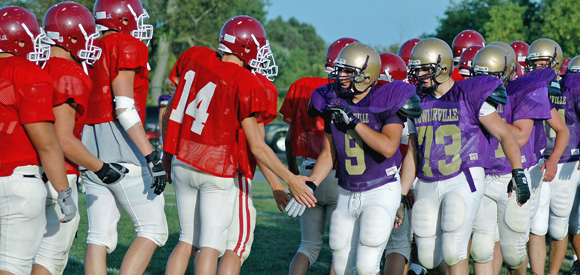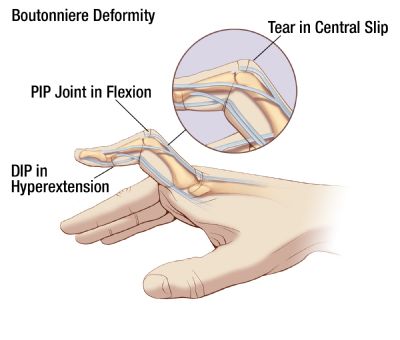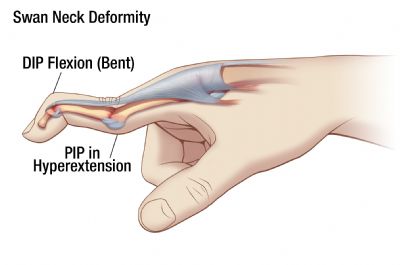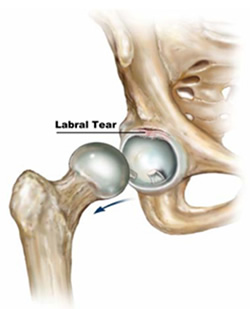The post Concussions & Repeated Minor Head Traumas appeared first on Rehab Experts.
]]>The effects of concussions have rightfully been the focus of an increasing amount of press over the last several years. Some stories are particularly disturbing: the motor deficits seen with boxer Muhammed Ali, incidences of suicides and depression suffered by professional and college level football players.

Head trauma is a very serious issue. Athletes are bigger, quicker, and hit harder than they did decades ago. This likely corresponds with an increase in diagnosed concussions in professional and amateur sports. Recent research, however, is bringing to light something startling about concussions: many athletes are suffering brain damage not only from hard hits, but also from repeated smaller “micro-traumas” to the head.
Micro-traumas to the brain can be seen with something as innocuous as heading a soccer ball, or a football lineman pushing up against a opponent when the ball is snapped. If these activities are repeated over and over again, the end result can be just as disturbing as a diagnosed concussion.
From a rehabilitation standpoint, head injury patients are among the most difficult to treat. Chronic headaches, neck pain, and shooting pain down the arms are very common chronic conditions that arise from head and neck trauma. “Myofascial pain”, or pain stemming from the muscle, nerves, and other soft tissue structures is a common occurrence as well. Behavioral differences are noted when brain tissue is repeatedly knocked against the skull: depression, aggression, and changes in motor speech function are a few examples.
Young athletes often fail to recognize that multiple minor head traumas can have terrible long term consequences. My advice to parents may sound excessive, but is it truly worth a few years of competition and fun for your child, given what we now know about head trauma?
[tagline_box link=”http://morningcodes.com/rehab/contact-us” linktarget=”” button=”Contact us now!” title=”Physical Therapy Home Service” description=”Are you a person suffering from some physical disabilities? Do you intend to find a solution to your physical disabilities? Are you already tired masking the pain and intend to find a solution to your physical disabilities? Do you intend to address the root-cause of pain and find a lasting remedy to your physical disabilities? Are you looking for a good quality physical therapy home service?”][/tagline_box]
Resources:
[one_half last=”no”]
[/one_half]
The post Concussions & Repeated Minor Head Traumas appeared first on Rehab Experts.
]]>The post Hip Labral Repair Rehabilitation: What To Expect appeared first on Rehab Experts.
]]>
The Hip Labral is a cartilaginous ring that extends around the outside of the hip socket as seen in the illustration below. Hip labral tears manifest as sharp, nagging pain deep in the hip or the groin areas. Pain associated with a hip labral tear may also refer down the thigh towards the knee. Car accidents and chronic repetitive stress imposed from years of sports or yoga are often root causes of hip labral tears. Women appear to be much more susceptible to this type of injury.
Hip labral surgery is a comparatively new orthopedic procedure that seeks to repair the labrum and thus stabilize the hip socket. This type of surgery is becoming less invasive from year to year: the patients that we see now have very small surgical scars and fewer post-operative precautions.
Precautions & Expectations in Regards to Hip Labral Repair Surgeries
1. Almost all post-operative labral repair patients are “non-weight bearing” for a minimum of two weeks following the surgery. Patients use crutches during this time frame. In terms of rehabilitation, we ask patients to lie flat on a bed or on the floor for a period of time each day that he or she is using crutches. The purpose of this is to allow the hip flexor muscles to relax into a neutral position, as suspending one’s leg while using crutches does require prolonged flexion of the hip.
2. Swelling in the hip area is an inevitable effect of surgery and causes the surrounding muscles to “shut down.” Isometric exercises are typically started shortly after surgery in order to minimize the negative effects of swelling. The gluteus maximus, gluteus medius, hip adductors, and hip flexors can all be trained gently through isometric exercise. There are many resources on the Internet that can lead you in the right direction in terms of isometric exercise instruction.
3. Pain in the lower back and pelvis following labral repair surgery is common because of muscular imbalance. The spine in general does not handle asymmetry well: if one leg cannot accept weight well for a prolonged period of time, the lower back and pelvis are loaded too heavily from the stronger side. In order to minimize this effect, in rehabilitation we encourage the patient to work on idealizing the mobility of the lower back and pelvis through a series of exercises. It also goes without saying that the sooner the patient regains his or her strength and weight bearing capacity on the surgical side, the better the lower back and pelvis will feel.
4. Healing from this surgery generally takes a long time! It is not uncommon for patients to experience discomfort six months after the fact. The important thing to remember is that if you notice positive differences from week to week (or month to month), you are going in the right direction! We will typically ask patients to record the distance that they can walk before pain sets in and then use this as a baseline for comparison.
5. With hip and knee surgery in particular, people have the long-term tendency to develop habits that keep them from maintaining full weight and strength through the leg. Avoid crossing your surgical leg over the uninvolved leg when seated, and when standing, force yourself to bear your weight equally through both legs. The body will often unconsciously try to default over to the non-surgical side because it has learned to do so. Initial post-surgical weight bearing precautions are a necessary evil: people need to re-teach their bodies to accept weight equally, and this may takes months of practice.
[tagline_box link=”http://www.rehabexperts.com.ph/contact-us” linktarget=”” button=”Contact us now!” title=”Physical Therapy Home Service” description=”Are you a person suffering from some physical disabilities? Do you intend to find a solution to your physical disabilities? Are you already tired masking the pain and intend to find a solution to your physical disabilities? Do you intend to address the root-cause of pain and find a lasting remedy to your physical disabilities? Are you looking for a good quality physical therapy home service?”][/tagline_box]
Resources:
[one_half last=”no”]
- Post Rehab Essentials
- Firm And Flatten Your Abs.
- Sciatica Treatment At Home
- The Underground Workout
- Vertical Jump Training -the Jump Manual
- Body weight Exercise Revolution
- 12 Steps To A Complete Body Detox.
[/one_half]
The post Hip Labral Repair Rehabilitation: What To Expect appeared first on Rehab Experts.
]]>The post Rheumatoid arthritis (RA) appeared first on Rehab Experts.
]]>
Rheumatoid arthritis (RA) is a common, chronic polyarthritis which may be classified as a diffuse, multi-system, connective tissue disease. The hallmarks of RA are positive testing for immunoglobulin M (IgM) rheumatoid factor; bilateral, usually symmetrical joint disease; erosive changes noted radiographically; and persistent inflammatory synovitis.

 Incedence, Distribution, And Control Of Disease In Populations
Incedence, Distribution, And Control Of Disease In Populations
The prevalence of RA in the population is approximately 1%, and increases with increasing age. Women are affected about three times more frequently than men, although this gender difference is reversed in children. RA has a worldwide distribution. A genetic predisposition does seem to exist, as first-degree relatives of persons with seropositive erosive disease are five to six times more likely to develop severe RA. A strong association with the major histocompatibility complex gene product, HLA-DR4, and a preponderance of whites and Japanese with classic or definite RA have been demonstrated.
The Scientific Study Of The Nature Of Disease and Its Causes, Processes, Development, And Consequences.
Various theories have been advanced to explain RA, including infective agents, cellular hypersensitivity, genetic predisposition, and immune complex involvement. None has gained unequivocal acceptance. the exact role of rheumatoid factor is still uncertain.
A probable early event in the disease process is an antigen-antibody reaction at the synovial level with activation of complement. Acute pathological findings include micro-vascular injury; edema of subsynovial tissues; and synovial lining cell proliferation.
In established disease pathological examination of the synovium reveals edema, villous synovial rpojections, and hypertrophy and hyperplasia of the synovial lining cells (both A and B type cells). Vascular changes such as capillary obstruction, nuetrophil infiltration, areas of thrombosis, and perivascular hemorrhage are common. Mononuclear cells predominate in the synovial stroma. Mechanisms favoring and/or resulting in a chronic disease process are unknown. As inflammation contineus, pannus, an inflammatory synovial mass, is laid down. Pannus may ultimately invade bone and cartilage and lead to joint damage.
Clinical Features
The onset of RA is usually gradual; however, 15 to 20% of patients experience it suddenly. Symptoms such as fatigue, anorexia, malaise, weight loss, weakness and generalized “aches and pains” usually herald the onset of RA. RA is iniatially polyarticular in approximately 75% of patients. The small joints of the hands and feet are most affected. Ultimately the hand involvement predominates, with PIP joints affected in 85% of patients, metacarpophalangeal (MCP) joints in 70%, and wrist in 80%. Other joints such as the knees, cervical spine, feet, and temporomandibular are commonly, though less frequently, affected.
Clinical features of involved joints include pain, swelling, limitation of movement, stiffness, and various signs of inflammation, such as erythema and synovitis. Morning stiffness, considered a result of synovial congestion, joint capsule thickening, and an increased volume of synovial fluid, is common.
The clinical course of RA is highly variable. Approximately 10% of patients have a mild, transient polyarthritis followed by a lasting remission; less than 10% have destructive polyarthritis. The remaining 80% exhibit a characteristic waxing and waning of symptoms. The degree of articular severity and the presence of extra-articular manifestations generally do not correlate; however, both of these are more likely to be severe in patients with high titers of rheumatoid factor.
Patients rarely die of RA. Death results typically from associated features such as vasculitis, cervical spine subluxation, complications of drug therapy, and infection. The course of the disease naturally varies with the individual patient, but certain aspects indicate a less favorable outcome. These include insidious onset (patients who perhaps present too late), youthful onset, being female and/or being Caucasian, seropositivity, rheumatoid nodules, and high titers of rheumatoid factor, C-reactive protein and/or haptoglobin.
The term “symmetrical,” used radiologically, refers to bilateral joint involvement, though not necessarily to the same degree. Bony ankylosis is rarely a feature.
Management
A management profile of rheumatoid arthritis can serve as a genetic model for physiatric care of the arthritides. Comprehensive management of the arthritis patient involves prescription of appropriate medications as well as utilization of a variety of resources familiar to physiatrist. Aspirin, in doses of 3 to 6 grams daily, is the accepted initial drug of choice. Begin at a dosage of 0.9 gram orally QID (4x/day) and increase gradually each 4 to 5 days as tolerated. Obtain serum salicylate levels (22-30mg/dl) periodically. A level producing tinnitus obviously needs to be reduced. Doses below 3 grams/day are usually only analgesic.
If aspirin is contraindicated, cannot be tolerated, or does not produce the desired therapeutic effect, a trial of non-steroidal anti-inflammatory agents (NSAIDs) is indicated. If these agents fail to suppress the disease process, a variety of such as gold, steroids, penicillamine, and antimalarials are available, in addition to a variety of experimental drugs and procedures. Consultation with a rheumatologist is recommended at this level of disease management.
Physical Rehabilitation
The physical rehabilitation team is familiar with the wide array of resources available for optimal treatment of arthritis patients.
The goals of arthritis rehabilitation are to:
- maintain or improve range of motion;
- prevent deformities;
- limit disability;
- protect susceptible joints;
- decrease pain and stiffness;
- use joints and muscles efficiently and safely;
- improve strength in selected muscles;
- improve endurance; and
- control weight and maintain appropriate nutrition.
Efficient arthritis rehabilitation is characterized by a motivated, well-informed patient, following a regimen prescribed and coordinated by a knowledgeable physician administered by a registered, well-trained therapist, and coordinated with other medical/surgical treatments. The regimen should include sufficient instructional treatments, an ongoing basic home program, and modification of the program as disease state changes. Poor rehabilitation outcome can result from the omission of these elements. Formal treatments that do not provide functional improvement or relief after several weeks should either be modified or discontinued. the patient and family should be aware that physical medicine and rehabilitaion (PM&R) treatments do not cure arthritis, substitute for adequate rest, replace prescribed medications, or usually result in rapid improvement.
Agents used for arthritis rehabilitaion include heat, cold, hydrotherapy, exercise, rest, mechanical agents, education, and/or other agents.
[tagline_box link=”http://www.rehabexperts.com.ph/contact-us” linktarget=”” button=”Contact us now!” title=”Physical Therapy Home Service” description=”Are you a person suffering from some physical disabilities? Do you intend to find a solution to your physical disabilities? Are you already tired masking the pain and intend to find a solution to your physical disabilities? Do you intend to address the root-cause of pain and find a lasting remedy to your physical disabilities? Are you looking for a good quality physical therapy home service?”][/tagline_box]
The post Rheumatoid arthritis (RA) appeared first on Rehab Experts.
]]>
